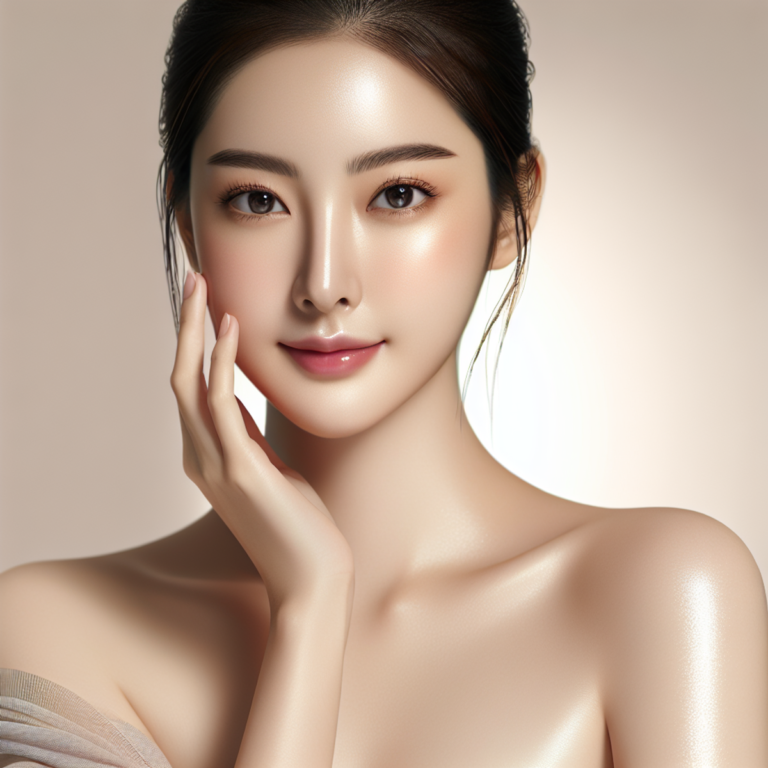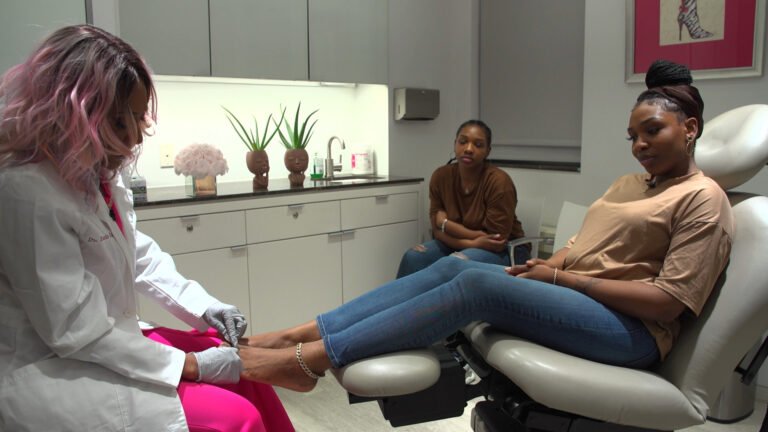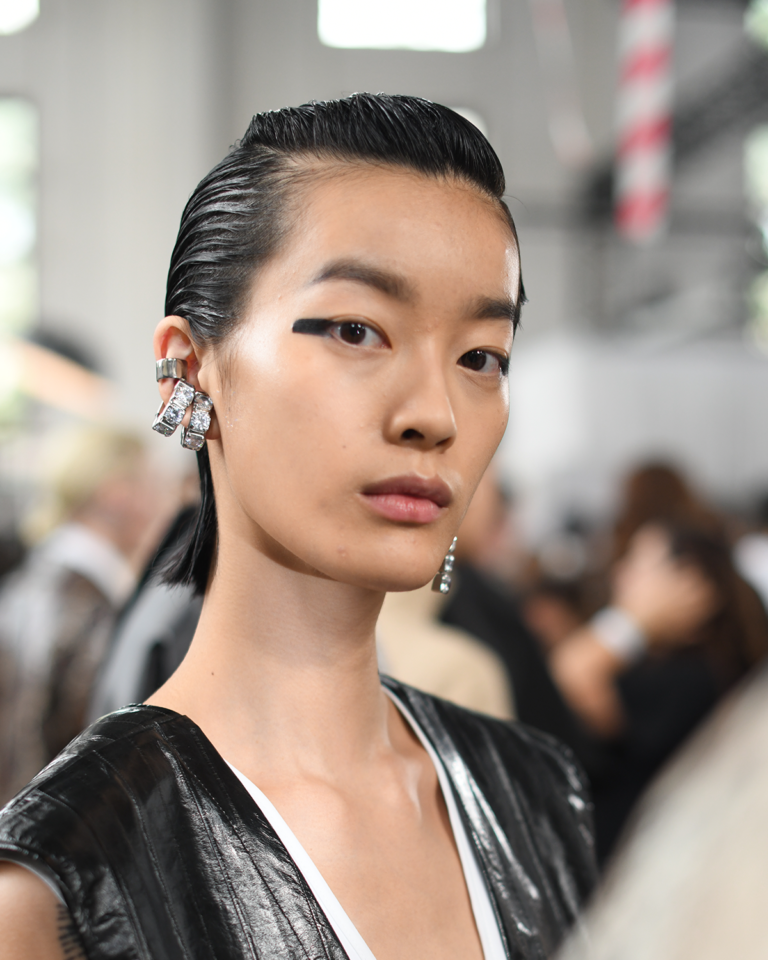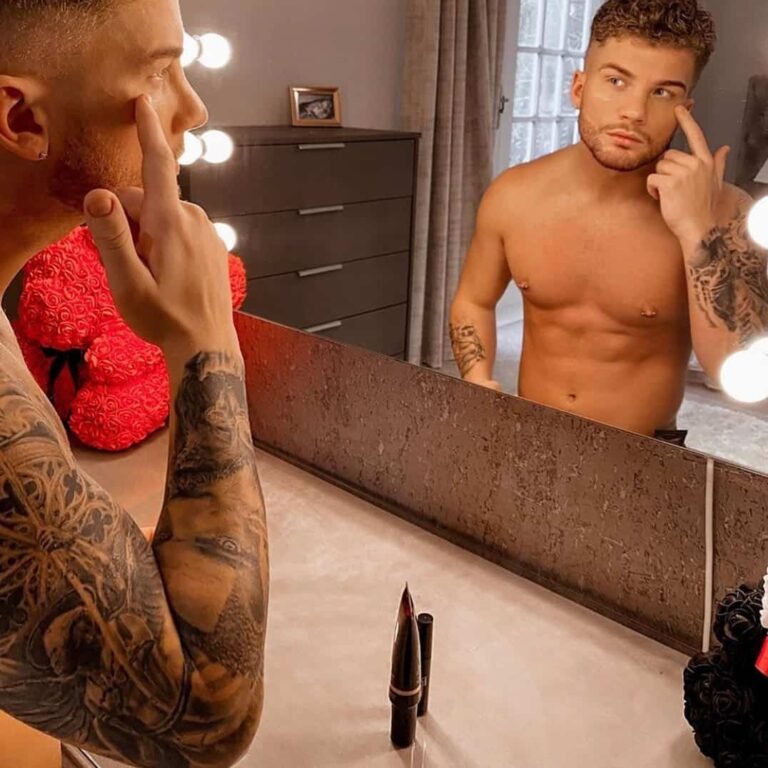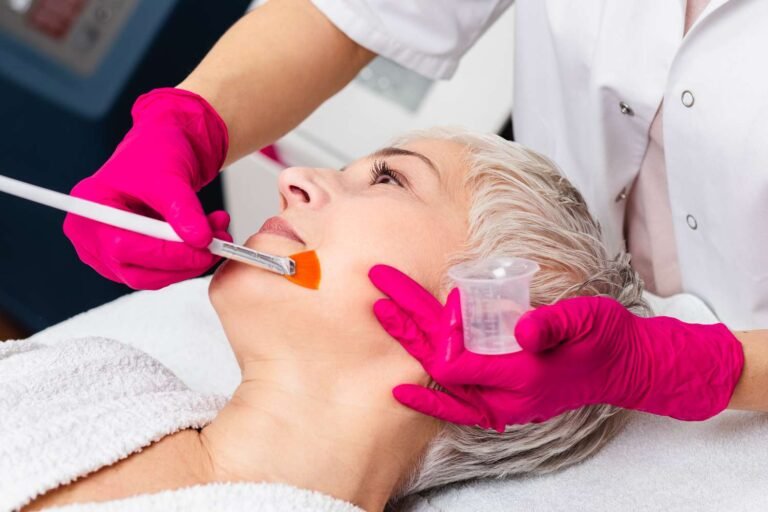How to Get Rid of Pimples: Your Ultimate Guide to Clear Skin

Introduction
Welcome to “How to Get Rid of Pimples: Your Ultimate Guide to Clear Skin.” This comprehensive guide is designed to help you achieve clear, radiant skin by exploring effective strategies and tips.
Clear skin plays a significant role in boosting self-esteem and confidence. When your skin looks its best, you feel more comfortable and confident in your daily interactions and activities. This guide will provide you with actionable insights on:
- Skincare Routines: Tailored routines for different skin types.
- Treatments: Over-the-counter and prescription options.
- Diet: Nutritional advice to support skin health.
- Lifestyle Factors: Habits that contribute to clearer skin.
By understanding these aspects, you’ll be better equipped to tackle pimples and maintain healthy skin. Dive into each section for detailed advice and product recommendations tailored to your unique needs.
Understanding Acne and Pimples
Acne is a common skin condition that occurs when hair follicles become clogged with oil and dead skin cells. This can lead to various forms of blemishes, commonly referred to as pimples.
Common Causes of Acne
Several factors contribute to the development of acne:
- Hormonal Changes: Fluctuations in hormone levels, especially during puberty, pregnancy, or menstrual cycles, can increase oil production in the skin.
- Bacteria: The presence of bacteria such as Propionibacterium acnes (P. acnes) on the skin can exacerbate inflammation and lead to acne formation.
- Excess Oil Production: Overactive sebaceous glands produce more oil than necessary, leading to clogged pores.
- Dead Skin Cells: When dead skin cells do not shed properly, they can mix with oil and block hair follicles.
Different Types of Acne
Acne manifests in various forms, each with distinct characteristics:
Whiteheads
Whiteheads are closed comedones where the follicle is completely blocked. They appear as small white bumps on the surface of the skin.
Blackheads
Blackheads are open comedones where the clogging material is exposed to air, causing it to oxidize and turn black. These are often seen as small dark spots on the skin.
Cystic Acne
Cystic acne is a severe form characterized by large, painful lumps beneath the skin’s surface. These cysts contain pus and can lead to scarring if not treated properly.
Understanding these types helps in selecting appropriate treatments tailored to specific needs. Whether you’re dealing with occasional whiteheads or persistent cystic acne, recognizing what you’re up against is crucial for effective management.
Identifying Your Skin Type for Effective Treatment
Understanding your skin type is crucial in tailoring an effective skincare routine. Each skin type has unique challenges and requires specific products to manage acne effectively. Here, we focus on how to identify if you have oily skin and the best ways to treat it.
Skincare Routine for Oily Skin: Tips and Product Recommendations
Specific Challenges Faced by Individuals with Oily Skin
Oily skin tends to produce excess sebum, which can clog pores and lead to acne. Common issues include:
- Shiny appearance: The overproduction of oil gives the skin a shiny look.
- Frequent breakouts: Pores clogged with excess oil are more prone to developing pimples.
- Larger pores: Oily skin often has visibly larger pores, which can become clogged more easily.
Addressing these challenges involves choosing the right skincare products and routines tailored for oily skin.
Recommended Products for Oily Skin
When selecting products for oily skin, prioritize those that are lightweight and non-comedogenic (won’t clog pores). Here are some recommendations:
- CleansersSalicylic Acid Cleanser: Helps exfoliate and unclog pores. Examples include La Roche-Posay Effaclar Medicated Gel Cleanser.
- Foaming Cleansers: Effective in removing excess oil without stripping the skin of its natural moisture. Consider Neutrogena Oil-Free Acne Wash.
- MoisturizersGel-Based Moisturizers: These provide hydration without adding extra oil. For instance, Neutrogena Hydro Boost Water Gel is a popular choice.
- Oil-Free Moisturizers: Look for labels indicating “oil-free” and “non-comedogenic.” CeraVe PM Facial Moisturizing Lotion is a good example.
- TonersAlcohol-Free Toners: These help balance oil production without over-drying the skin. Thayers Witch Hazel Toner is widely recommended.
- Spot TreatmentsBenzoyl Peroxide Creams: Effective in reducing bacteria and inflammation associated with acne. Products like Clean & Clear Persa-Gel 10 are often used.
- Salicylic Acid Treatments: Useful for targeting specific areas prone to breakouts. Paula’s Choice CLEAR Daily Skin Clearing Treatment is a notable product.
- SunscreensOil-Free Sunscreens: Essential to protect against UV damage without causing breakouts. EltaMD UV Clear Broad-Spectrum SPF 46 is highly regarded.
Implementing these products into a daily routine can significantly improve oily skin management:
Morning Routine
- Cleanse with salicylic acid or foaming cleanser.
- Apply an alcohol-free toner.
- Use a gel-based or oil-free moisturizer.
- Finish with an oil-free sunscreen.
Evening Routine
- Cleanse thoroughly to remove makeup and impurities.
- Use a toner if needed.
- Apply spot treatments on active pimples or breakout-prone
Skincare Routine for Dry Skin: Tips and Product Recommendations
Dry skin can be just as prone to breakouts as oily skin, often due to the overcompensation of oil production when the skin is dehydrated. Understanding how dryness can contribute to acne is essential for effective treatment.
Understanding Dryness and Breakouts
When your skin lacks moisture, it can become tight, flaky, and irritated. This condition may lead to the overproduction of sebum (oil) in an attempt to hydrate itself. The excess oil, combined with dry flakes, can clog pores and result in breakouts. Recognizing this cycle is key to managing acne for those with dry skin.
Recommended Products for Dry Skin
Selecting hydrating and nourishing products that won’t clog pores is crucial.
Hydrating Cleansers:
- CeraVe Hydrating Cleanser: Contains ceramides and hyaluronic acid, which help restore and maintain the skin’s natural barrier while providing essential hydration.
- La Roche-Posay Toleriane Hydrating Gentle Cleanser: Infused with niacinamide and glycerin, this gentle formula effectively cleanses without stripping the skin of its natural oils.
Rich Moisturizers:
- Neutrogena Hydro Boost Water Gel: Lightweight yet intensely hydrating, this gel moisturizer contains hyaluronic acid, which attracts moisture to the skin without clogging pores.
- Vanicream Moisturizing Cream: Free from common irritants like dyes and fragrance, it’s excellent for sensitive dry skin needing deep hydration.
Importance of Knowing Your Skin Type
Determining your skin type is fundamental in choosing the right products and treatments. You can perform a simple test at home:
- Cleanse your face thoroughly with a gentle cleanser.
- Pat your face dry with a clean towel.
- Leave your skin bare for about an hour without applying any products.
- Observe how your skin feels:
- If it feels tight or flaky, you likely have dry skin.
- If it appears shiny or oily only in specific areas like the forehead or nose, you might have combination skin.
By understanding whether you have oily, dry, or combination skin, you can tailor your skincare routine more effectively to address issues like pimples and achieve clearer skin.
Skincare Routine for Combination Skin: Tips and Product Recommendations
Challenges Faced by Individuals with Combination Skin
Combination skin presents unique challenges as it involves both oily and dry areas on the face. The T-zone (forehead, nose, and chin) tends to be oily, while the cheeks may be dry or normal. Balancing moisture levels without triggering breakouts can be tricky. Using products that cater to both skin types is essential for effective combination skin treatment.
Determining Your Skin Type
Knowing your skin type is crucial in choosing the right skincare routine. A simple test can help:
- Wash your face with a gentle cleanser.
- Pat it dry and leave it bare for an hour.
- Observe your skin:
- Oily: Shine on entire face.
- Dry: Tightness or flaky areas.
- Combination: Oily T-zone, dry/normal cheeks.
Recommended Products for Combination Skin
Finding the right products can make a significant difference in managing combination skin effectively.
Balancing Toners
Toners help balance the skin’s pH and control oil production without over-drying. Look for toners that are alcohol-free and contain soothing ingredients like:
- Witch Hazel: Helps control oil without stripping moisture.
- Green Tea Extract: Reduces inflammation and provides antioxidants.
Lightweight Moisturizers
Hydration is key, even for oily areas. Opt for lightweight, non-comedogenic moisturizers that hydrate without clogging pores:
- Gel-based Moisturizers: Ideal for providing hydration without heaviness.
- Hyaluronic Acid Serums: Attract moisture to the skin, suitable for all areas of the face.
Makeup Considerations
When it comes to makeup, individuals with combination skin often wonder whether to use silicone or water-based products. It’s advisable to opt for water-based makeup, as it tends to be lighter and less likely to clog pores in oily areas.
Targeted Treatments
Tailor treatments based on specific needs of different facial areas:
- Clay Masks: Apply to oily T-zone to absorb excess oil.
- Hydrating Masks: Use on dry areas to provide extra moisture.
By understanding and addressing the unique needs of combination skin, you can develop a skincare routine that maintains balance and clarity.
Building an Effective Daily Skincare Routine for Clear Skin
Cleansing Techniques: Choosing the Right Products for Your Skin Type
Cleansing is the cornerstone of any daily skincare routine. It’s crucial to remove dirt, excess oil, and impurities that can clog pores and lead to pimples. Understanding the importance of washing your face and selecting the right cleanser involves understanding your skin type and considering various factors that contribute to skin health.
Factors to Consider When Selecting a Cleanser
- FormulationGel Cleansers: Ideal for oily and acne-prone skin as they help remove excess oil without stripping the skin.
- Cream Cleansers: Suitable for dry or sensitive skin, providing hydration while cleansing.
- Foaming Cleansers: Good for combination skin types, balancing oil control with moisture retention.
- pH LevelMaintaining the skin’s natural pH balance (around 5.5) is essential. Using a mild cleanser that mimics this pH level helps preserve the skin barrier and prevents irritation.
- IngredientsSalicylic Acid: Excellent for unclogging pores and reducing inflammation.
- Benzoyl Peroxide: Effective in killing acne-causing bacteria but can be drying.
- Glycerin or Hyaluronic Acid: Hydrating ingredients that ensure your skin doesn’t lose moisture during cleansing.
Frequency and Method of Cleansing Based on Different Skin Types
- Oily SkinFrequency: Twice a day (morning and evening).
- Method: Use a gel or foaming cleanser with salicylic acid. Massage gently in circular motions, focusing on areas prone to excess oil such as the T-zone.
- Dry SkinFrequency: Once at night; optional gentle cleanse in the morning.
- Method: Opt for a cream cleanser with hydrating ingredients like glycerin. Apply using light strokes to avoid irritating the skin.
- Combination SkinFrequency: Twice a day.
- Method: Use a balancing cleanser that addresses both oily and dry areas. Focus on cleansing the T-zone thoroughly while being gentle on drier regions like cheeks.
- Sensitive SkinFrequency: Once daily or every other day depending on sensitivity levels.
- Method: Choose fragrance-free, hypoallergenic cleansers. Apply using minimal pressure to prevent aggravation.
Exfoliation Strategies: How to Safely Remove Dead Skin Cells Without Irritating Your Skin
Regular exfoliation is critical in preventing clogged pores and promoting cell turnover. However, it’s essential to choose the right type of exfoliant based on your skin type to avoid irritation.
- Physical Exfoliants
- Pros: Provide immediate results by sloughing off dead skin cells.
- Cons: Can be too abrasive for sensitive or acne-prone skin, potentially causing micro-tears.
- Chemical Exfoliants
Types:
- Alpha Hydroxy Acids (AHAs): Such as glycolic acid, suitable for dry or sun-damaged skin.
Exfoliation Strategies: How to Safely Remove Dead Skin Cells Without Irritating Your Skin
Exfoliation plays a crucial role in your daily skincare routine, especially when aiming to get rid of pimples and achieve clear skin. The process helps prevent clogged pores and promotes cell turnover, which is essential for maintaining a healthy complexion.
Benefits of Regular Exfoliation
Regular exfoliation can:
- Prevent Clogged Pores: By removing dead skin cells, exfoliation prevents them from clogging your pores, reducing the likelihood of pimples.
- Promote Cell Turnover: It encourages the shedding of old skin cells and the growth of new ones, resulting in smoother and brighter skin.
- Enhance Product Absorption: Exfoliated skin can better absorb other skincare products like serums and moisturizers.
Types of Exfoliants
There are two main types of exfoliants available in the market: physical scrubs and chemical exfoliants.
1. Physical Scrubs
- Pros:
- Immediate results as you can feel the texture change.
- Easy to use and widely available.
- Cons:
- Can be abrasive if not used correctly, potentially causing microtears in the skin.
- Not suitable for sensitive or acne-prone skin.
2. Chemical Exfoliants
- Pros:
- Generally gentler on the skin compared to physical scrubs.
- Effective in treating acne by targeting deeper layers of the skin.
- Examples include salicylic acid (great for oily, acne-prone skin) and glycolic acid (suitable for all skin types).
- Cons:
- May cause irritation if overused or if you have very sensitive skin.
- Requires careful selection based on your specific skin needs.
Incorporating exfoliation into your daily skincare routine involves understanding the balance that suits your individual requirements. Using a mild cleanser first prepares your skin for exfoliation. It’s vital to follow up with a moisturizer to maintain hydration levels, even if you have oily skin. Consistency is key; tailor your regimen to meet your specific needs without over-exfoliating.
Moisturizing Essentials: Why Hydration Is Key Even If You Have Oily Skin
Many believe that oily skin doesn’t require moisture, but this is a common misconception. Hydration is essential for all skin types, including oily skin. Skipping moisturization can lead your skin to produce even more oil to compensate for the lack of hydration, exacerbating acne issues.
Choosing the Right Moisturizer
- Non-Comedogenic: Look for products labeled as non-comedogenic. These are specifically formulated not to clog pores, reducing the risk of breakouts.
- Lightweight Formulation: Opt for gel-based or water-based moisturizers that provide hydration without feeling heavy or greasy on the skin.
- Ingredients to Seek: Hyaluronic acid and glycerin are excellent hydrating agents that don’t contribute to oiliness or acne. Niacinamide can also help regulate sebum production and soothe inflammation.
Recommended Products
- CeraVe PM Facial Moisturizing Lotion: A lightweight, non-greasy option that’s ideal for nighttime use.
- Neutrogena Hydro Boost Water Gel: Contains hyaluronic acid for intense hydration without clogging pores.
- La Roche-Posay Effaclar Mat Moisturizer: Specifically designed for oily skin, it helps to control shine and provides a matte finish.
By incorporating a suitable moisturizer into your daily skincare routine, you maintain a balanced skin barrier, which is crucial for preventing acne. Remember, consistency in following a skincare routine tailored to your specific needs is key.
For building an effective daily regimen:
- Cleansing: Start with a mild cleanser suitable for your skin type.
- Exfoliating: Use an exfoliant 2-3 times a week to remove dead skin cells.
- Moisturizing: Apply a non-comedogenic moisturizer twice daily.
Maintaining this routine diligently helps in managing oily skin while keeping pimples at bay.
Acne-Fighting Ingredients You Should Look For in Products
Effective acne treatment often hinges on the ingredients in your skincare products. Knowing what to look for can make all the difference.
Benzoyl Peroxide
One of the most well-known acne-fighting ingredients is benzoyl peroxide. This powerful antimicrobial agent works by reducing the bacteria that cause acne and helping to clear blocked pores. Available in various strengths, benzoyl peroxide can be found in cleansers, spot treatments, and gels.
Pros and Cons of Benzoyl Peroxide
Pros:
- Effective against inflammatory acne
- Reduces oil production
- Helps prevent future breakouts
Cons:
- Can cause dryness or irritation
- May bleach fabrics (towels, pillowcases)
Using benzoyl peroxide as part of a daily skincare routine can offer substantial improvements for those struggling with persistent pimples.
Exploring Natural Remedies: Do They Really Work?
Natural remedies are popular alternatives to conventional acne treatments. Ingredients like tea tree oil and aloe vera gel are frequently recommended. But do they really work?
Tea Tree Oil
Tea tree oil is renowned for its antibacterial and anti-inflammatory properties. Applied topically, it can reduce the severity of acne.
Benefits and Limitations of Tea Tree Oil
Benefits:
- Natural antibacterial properties
- Can reduce redness and swelling
- Often less irritating than synthetic treatments
Limitations:
- May cause allergic reactions in some individuals
- Less effective for severe acne compared to benzoyl peroxide
Scientific studies indicate that tea tree oil can be effective but often requires consistent use over several weeks to see noticeable results.
Aloe Vera Gel
Aloe vera gel is another natural remedy praised for its soothing and healing properties. It’s often used to calm irritated skin and promote healing.
Benefits and Limitations of Aloe Vera Gel
Benefits:
- Anti-inflammatory properties help reduce redness
- Moisturizes without clogging pores
- Can accelerate wound healing
Limitations:
- Effectiveness varies from person to person
- Limited evidence supporting its efficacy as a standalone treatment for acne
Research suggests aloe vera gel might be more beneficial when combined with other treatments rather than used alone.
Salicylic Acid
Salicylic acid is another key ingredient in many over-the-counter acne products. This beta hydroxy acid (BHA) helps exfoliate the skin, unclog pores, and reduce inflammation.
Pros and Cons of Salicylic Acid
Pros:
- Effective at preventing clogged pores
- Mild exfoliant suitable for sensitive skin
- Can reduce blackheads and whiteheads
Cons:
- Potentially drying if overused
- May cause mild irritation initially
Incorporating salicylic acid into your regimen can help maintain clearer skin by regularly removing dead skin cells that contribute to blockages.
Retinoids
Retinoids like adapalene gel are derived from vitamin A and are highly effective at treating acne by promoting cell turnover and preventing pores from becoming clogged.
Pros and Cons of Retinoids
Pros:
Encourages faster skin cell renewal
Helps prevent new breakouts
Can improve skin texture and tone
Cons:
Can cause initial irritation or dryness
Increases sensitivity to sunlight; sunscreen is essential
Dermatologists often recommend retinoids as part of a comprehensive skincare routine for their multifaceted benefits.
Understanding these ingredients allows you to make informed choices about your skincare products, tailoring them to your specific needs for more effective acne management.
When To Consider Over-the-Counter Treatments And How To Choose The Right One For You?
Over-the-counter (OTC) acne products come in various forms, including creams, gels, and pads. Each formulation offers distinct benefits and drawbacks depending on your specific needs.
Popular Active Ingredients
- Salicylic Acid: This beta hydroxy acid (BHA) works by exfoliating the skin, helping to unclog pores and reduce inflammation. Ideal for individuals with blackheads and whiteheads.
- Benzoyl Peroxide: Known for its antibacterial properties, benzoyl peroxide targets P. acnes bacteria and reduces inflammation. Effective for treating moderate to severe acne.
Forms of OTC Treatments
1. Creams
Strength: Often milder, suitable for sensitive skin.
Target Area: Good for spot treatment or larger areas like the back.
Pros: Hydrating formulations available.
Cons: Can be too oily for some skin types.
2. Gels
Strength: Typically stronger, fast-absorbing.
Target Area: Effective for oily skin due to non-greasy texture.
Pros: Quick absorption, less likely to clog pores.
Cons: May cause dryness or irritation.
3. Pads
Strength: Varies; often contains salicylic acid or glycolic acid.
Target Area: Convenient for use on the face and body.
Pros: Easy application, good for travel.
Cons: Can be drying; single-use nature may not be eco-friendly.
Choosing the Right Product
Consider your skin type and specific acne concerns when selecting an OTC treatment:
- For oily skin, opt for gels with benzoyl peroxide or salicylic acid.
- Dry or sensitive skin benefits from creams with added moisturizers.
- Combination skin can use pads for targeted exfoliation without over-drying.
When selecting any product, always start with a lower strength to gauge your skin’s reaction before moving to higher concentrations. This can help prevent unnecessary irritation while effectively targeting acne.
How Your Diet Can Affect Your Skin Health
How Diet Affects Acne Severity
What you eat can have a big impact on your skin. Some foods can help clear up your skin, while others can make acne worse. Knowing which foods to include and which to avoid is key to keeping your skin healthy.
Foods That Can Help Clear Your Skin
- Fruits and Vegetables: Packed with vitamins, antioxidants, and fiber, these can reduce inflammation and promote healthy skin.
- Examples: Berries, citrus fruits, leafy greens, carrots.
- Whole Grains: These have a low glycemic index and won’t cause spikes in insulin levels, which can lead to acne breakouts.
- Examples: Brown rice, quinoa, oats.
- Lean Proteins: Important for repairing and renewing skin cells.
- Examples: Chicken breast, tofu, fish.
- Healthy Fats: Omega-3 fatty acids have anti-inflammatory properties that can reduce acne severity.
- Examples: Salmon, flaxseeds, walnuts.
- Probiotics: These support gut health, which is linked to reduced inflammation and better skin health.
- Examples: Yogurt, kefir, sauerkraut.
- Water: Staying hydrated helps flush out toxins from the body and keep the skin moisturized.
Foods That Can Make Acne Worse
- High Glycemic Index Foods: These cause a rapid increase in blood sugar levels leading to increased insulin production which can trigger acne.
- Examples: White bread, sugary snacks, soda.
- Dairy Products: Some studies suggest a link between dairy consumption and acne breakouts due to hormones present in milk.
- Examples: Milk, cheese, ice cream.
- Processed Foods: Often high in unhealthy fats and sugars that can worsen acne.
- Examples: Fast food, packaged snacks.
- Chocolate: Contains high amounts of sugar and dairy which can contribute to breakouts.
- Fried Foods: High in unhealthy fats that can clog pores and increase oil production.
- Examples: French fries, fried chicken.
Extra Tips
- Maintain a balanced diet rich in essential nutrients.
- Monitor how your skin reacts to different foods by keeping a food diary.
- Consult with a nutritionist for personalized dietary advice tailored to your skin type.
Eating a balanced diet not only benefits your overall health but also plays a big role in achieving clearer and healthier skin.
Lifestyle Factors That Play A Significant Role In Maintaining Healthy Skin Over Time
How Stress Levels Affect Breakouts
Stress has a significant impact on your skin’s health. Elevated stress levels can trigger the release of cortisol, a hormone that can increase oil production in your skin glands. This excessive oil can clog pores and lead to breakouts. Incorporating stress reduction techniques for acne into your daily routine can help mitigate these effects.
Practical Tips for Managing Stress:
- Yoga: Engaging in yoga sessions can help reduce cortisol levels, promoting a calmer state of mind and reduced skin flare-ups.
- Meditation: Regular meditation sessions have been shown to lower stress levels, which in turn can decrease the frequency of breakouts.
- Mindfulness Practices: Techniques such as deep breathing exercises or journaling can also play a crucial role in managing everyday stress.
The Importance of Quality Sleep for Healthy Skin
Quality sleep is essential for maintaining healthy skin. During sleep, your body undergoes repair and regeneration processes. Lack of adequate sleep can disrupt these processes, leading to dull skin and delayed healing of existing blemishes.
Benefits of Quality Sleep:
- Enhanced Skin Repair: Sleep allows your skin to recover from daily damage caused by environmental factors like pollution and UV radiation.
- Reduced Inflammation: Adequate sleep helps reduce inflammation levels in the body, which is beneficial for preventing acne flare-ups.
- Hormonal Balance: Sleep helps regulate hormones that control oil production in your skin, reducing the likelihood of clogged pores.
Tips for Better Sleep:
- Establish a Routine: Go to bed and wake up at the same time every day to regulate your body’s internal clock.
- Create a Restful Environment: Ensure your sleeping area is dark, quiet, and cool to promote better sleep quality.
- Limit Screen Time: Avoid using electronic devices before bedtime as the blue light emitted can interfere with your sleep cycle.
By understanding how stress affects breakouts and prioritizing quality sleep, you can significantly improve your skin’s health over time. Implementing these lifestyle changes will not only benefit your complexion but also enhance your overall well-being.
Makeup Choices That Won’t Worsen Your Acne Problems Further!
Guidelines on Selecting Makeup Products
When dealing with acne-prone skin, choosing the right makeup products is crucial. Look for labels that say non-comedogenic, which means the product is formulated to avoid clogging pores. This reduces the risk of breakouts.
Consider these points when selecting makeup:
- Foundation: Opt for oil-free, non-comedogenic foundations. Mineral-based powders can be a good choice because they often contain fewer irritating ingredients.
- Concealer: Choose lightweight, breathable concealers specifically designed for acne-prone skin.
- Blush and Bronzer: Powder-based products are preferable over creams, as they are less likely to clog pores.
Importance of Proper Makeup Removal
Properly removing all traces of makeup before bed is essential to prevent clogged pores and subsequent breakouts. Follow these steps for effective makeup removal:
- Use a Gentle Cleanser: A mild, non-comedogenic cleanser will help remove makeup without irritating your skin.
- Double Cleansing: Start with an oil-based cleanser to dissolve makeup, followed by a water-based cleanser to remove any residual impurities.
- Micellar Water: For sensitive areas like the eyes, micellar water can effectively remove makeup without harsh rubbing.
Recommended Practices
- Always use clean brushes and sponges to apply makeup. Dirty tools can harbor bacteria that may exacerbate acne.
- Avoid heavy, occlusive makeup formulations that can trap sebum and dead skin cells.
- Check ingredient lists for potential irritants such as fragrances or alcohol.
Using the right products and ensuring thorough removal aligns with the principles in How to Get Rid of Pimples: Your Ultimate Guide to Clear Skin. These guidelines can help maintain clear skin while allowing you to enjoy wearing makeup confidently.
When To Seek Professional Help If Nothing Else Seems To Work?
Knowing when to seek professional help is essential for managing stubborn or severe acne. Here are signs that indicate the need for expert intervention and an overview of treatment options provided by dermatologists.
Signs You Need Expert Help
- Persistent Acne: If you’ve been following a consistent skincare routine and using over-the-counter treatments without seeing improvement, it may be time to consult a dermatologist.
- Severe Acne: Cystic acne, nodules, or widespread breakouts causing significant discomfort or scarring warrant professional attention.
- Emotional Impact: Acne affecting your self-esteem or mental health is a strong indicator that you should seek specialized care.
- Scarring Concerns: Early intervention can prevent long-term scarring, making professional treatment beneficial.
Treatment Options Offered By Dermatologists
Dermatologists offer a variety of treatments tailored to individual needs. Here are some key options:
1. Prescription Medications
- Topical Retinoids: Adapalene, tretinoin, and tazarotene help unclog pores and promote cell turnover.
- Oral Antibiotics: Doxycycline, minocycline, and erythromycin reduce inflammation and bacteria.
- Hormonal Treatments: Birth control pills or anti-androgens like spironolactone can benefit those with hormonally-driven acne.
2. Isotretinoin Therapy
- Often considered for severe cystic acne unresponsive to other treatments.
- A powerful oral retinoid reducing oil production and inflammation.
- Requires close monitoring due to potential side effects such as dry skin and birth defects.
3. Chemical Peels & Microdermabrasion
- Procedures that exfoliate the skin’s surface to reduce acne scars and hyperpigmentation.
- Can improve skin texture and tone with multiple sessions.
4. Laser & Light Therapies
- Targeted treatments using laser or light energy to reduce bacteria and inflammation.
- Options include blue light therapy, pulsed dye lasers, and photodynamic therapy.
5. Corticosteroid Injections
- Used for large, painful cysts to reduce swelling quickly.
- Administered directly into the lesion by a dermatologist.
Why You Should See a Dermatologist
Seeing a dermatologist can give you access to advanced treatments that aren’t available over-the-counter. They can diagnose underlying conditions contributing to acne and develop a comprehensive treatment plan specifically for you.
Conclusion: Taking Charge Of Your Path Towards Clearer Skin With Confidence!
Achieving clear skin is more than just a cosmetic goal; it’s about boosting your self-esteem amidst acne struggles. By following the strategies outlined in this guide, you can take charge of your complexion journey with confidence and determination.
- Consistent Efforts: Establishing a daily skincare routine tailored to your skin type is fundamental. Regular cleansing, moisturizing, and exfoliation help maintain the health of your skin.
- Positive Mindset: Embrace the process with patience. Results won’t come overnight, but staying positive and persistent will yield improvements over time.
- Empowerment Through Knowledge: Understanding the causes of acne and knowing which ingredients to look for in products empowers you to make informed decisions.
“How to Get Rid of Pimples: Your Ultimate Guide to Clear Skin” provides you with comprehensive knowledge and actionable steps. You have the power to transform your skin health through dedication and a proactive approach.
Recognize that every small step contributes to big changes. Trust in your journey towards clearer skin, and remember that confidence comes from within as much as from without.
FAQs (Frequently Asked Questions)
What is the importance of having clear skin?
Having clear skin is crucial for self-esteem and confidence. It can significantly impact how individuals perceive themselves and how they interact with others, promoting a positive self-image.
What are the common causes of acne?
Common causes of acne include hormonal changes, bacteria, excess oil production, and clogged pores. Understanding these factors can help in managing and preventing breakouts.
How can I identify my skin type?
You can determine your skin type through a simple test that assesses oiliness and dryness. Knowing whether you have oily, dry, or combination skin is essential for selecting appropriate products and treatments.
What are some effective skincare routines for different skin types?
For oily skin, use lightweight, non-comedogenic products; for dry skin, opt for hydrating cleansers and rich moisturizers; and for combination skin, find balancing toners and lightweight moisturizers that cater to both oily and dry areas.
What ingredients should I look for in acne-fighting products?
Look for active ingredients like salicylic acid and benzoyl peroxide that effectively target acne by reducing inflammation and fighting bacteria. Natural remedies like tea tree oil may also offer benefits but should be used with caution.
How does diet influence skin health?
Diet plays a significant role in skin health. Certain foods can exacerbate acne while others can promote a clearer complexion. It’s important to include beneficial foods in your meals while avoiding those known to trigger breakouts.


